Saucony Kinvara 3 and TR
What always happens when you find a shoe that you love? They change it. We’ve been conditioned to be shoe hoarders. While I don’t think that’s going to be the next TV craze, I think most of you know what I’m talking about.
Lucky for me, one of my favorite shoes has stayed rather stable throughout its tenure. Shortly after its debut, Saucony knew they had a hit with the Kinvara. I first ended up in this shoe in the typical fashion – going to my local running store. I’ve been told several times that I’m a neutral runner (i.e. I don’t pronate all that much), and the Kinvara was among the shoes that the clerk brought out. After being giving the four or five choices a quick run, the Kinvara was the winner. It just felt right.
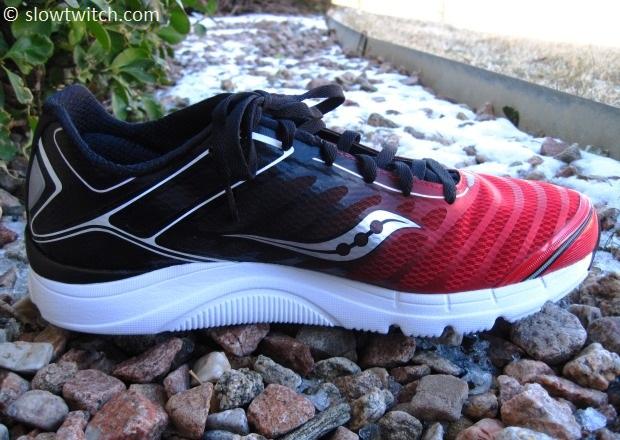
That was the first Kinvara. Should we call it the Kinvara ‘1’? I liked the shoe so much that I bought several pairs. I still have one fresh pair sitting in the box, in my closet. Then came the Kinvara 2. Then – and I can feel the suspense building – came the Kinvara 3, which we will review here. We will also take a look at the trail-worthy cousin of the Kinvara, called the “TR”, which debuted late in 2012.
Kinvara 3
The first thing that suggested to me that the Kinvara has stayed fairly steady in its incarnations was the weight; still 7.7 ounces for a men’s size 9. I brought out a pair of my well used original Kinvaras to compare them to the new model:
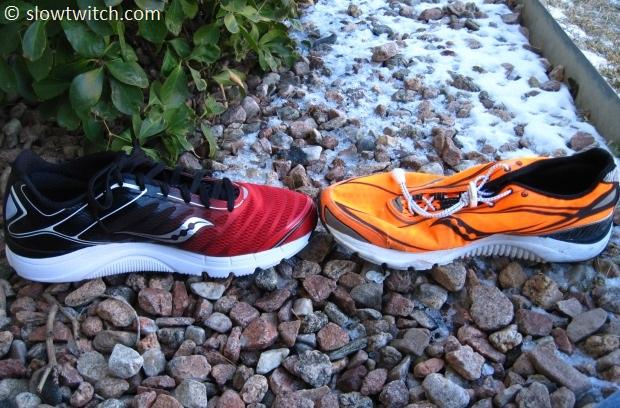
The pair on the right served as a pair of racing shoes for me, and have taken quite the beating.
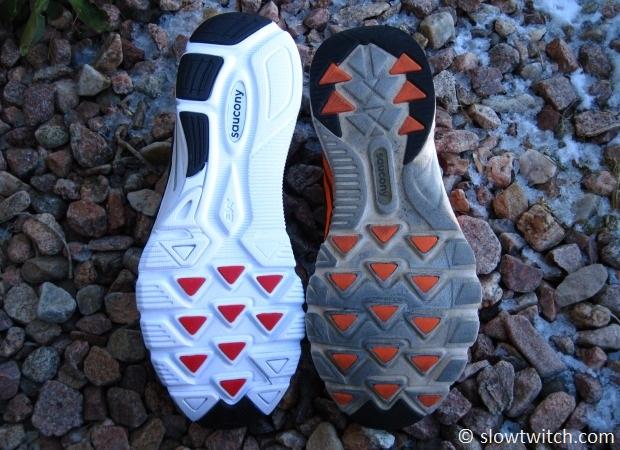
Obvious wear and dirt aside, they look quite similar. Saucony says that they did make a change by adding carbon rubber in specific high-wear areas, after examining hundreds of test shoes. I take that to be the dark areas on the outside of the heel area (above). Our own Jeroen van Geelen reviewed the Kinvara back in 2010, and noted that the shoe a very wide base – especially considering its light weight. That concept clearly carries through to the Kinvara 3.
The Kinvara 3 did get the addition of Saucony’s ‘FlexFilm’ upper, which is said to offer a more seamless and natural feel.
The thing I like about modern Saucony shoes is the fact that they actually tell you the dimensions of what you’re buying. Each shoe gets its own tech sheet, which is available in PDF form on the product website. Here is a portion of the sheet for the Kinvara 3:
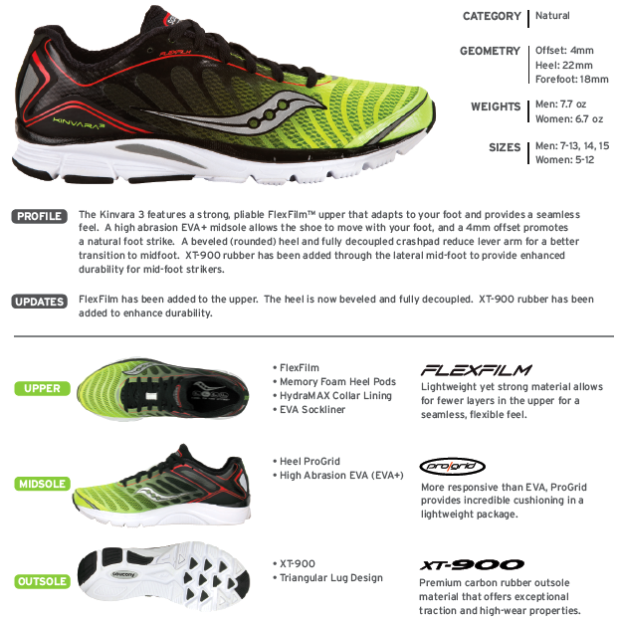
As you can see, the heights for both the forefoot and heel are listed (18mm and 22mm). Traditionally, there is some confusion surrounding sole thickness numbers. Is that the midsole only? Or perhaps the total shoe thickness – outsole (tread), midsole, and insole (sockliner)? According to Saucony’s VP of Human Performance & Innovation Lab, Spencer White,
“We report thickness and offset of the midsole/outsole unit. We don’t include sockliners because they are about 1/3rd or less of the stiffness of midsoles, so their effective contribution to the actual thickness and offset experienced by the runner during running is minimal. Not to say the sockliner is unimportant; it just doesn’t determine the cushioning and sagittal plane foot alignment experienced by the runner to the same degree as the midsole/outsole so we feel it gives a better measure of the functional characteristics of the shoe to report only midsole/outsole. Of course, there’s no great way to reduce the characteristics of a shoe to a few numbers.”
I can live with that. Perhaps a true measure of shoe thickness ought to include an effective compressed thickness of the shoe’s insole at an average runner’s weight (i.e. a 3mm unweighted insole might be 1mm under the weight of a 170lb runner). Whatever the future holds, I appreciate Saucony’s effort to make their shoe’s thickness and ramp/offset known. The only criticism I have is that this information is hidden inside a PDF file that you must download; I think it deserves a spot front-and-center along with weight and price.
The Kinvara remains as it was originally intended: a neutral, low-ramp, nicely cushioned shoe. In my opinion, it offers ‘more shoe’ than you expect, given the weight of it. It feels cushy, but not dead. Lively, but not harsh like a racing-only shoe. It achieves a middle ground that seems to please a wide audience. Those looking for more stability in a similar package will likely want to try the Mirage 3.
Kinvara 3 Specs:
-MSRP: $100
-Weight: 7.7oz (men’s size 9)
-Heel-to-toe offset (ramp): 4mm
-Forefoot height (midsole + outsole): 18mm
-Heel height (midsole + outsole): 22mm
-Category: Neutral / Cushioned / ‘Natural’
-Sizes: Men’s 7-13, 14, 15
Women’s 5-12
-Standard and Wide available
Kinvara TR
The Kinvara TR is the trail-intended cousin of the Kinvara 3.
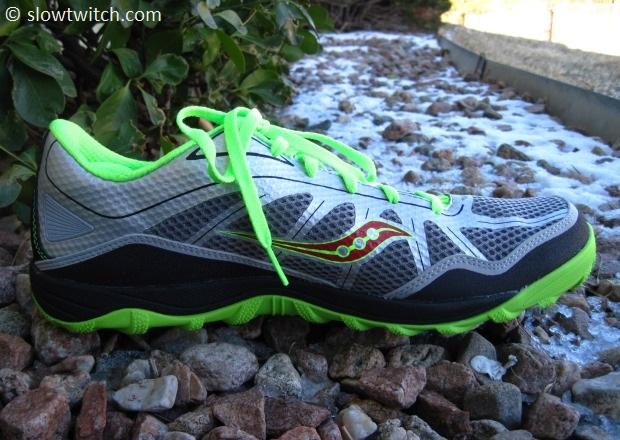
The first thing that should immediately jump out is the fact that it is even racier at a 12.5mm thick forefoot and 16.5mm thick heel (midsole + outsole, as mentioned above). Although it is a thinner overall shoe, the weight is slightly higher than the Kinvara 3, at 7.9 ounces for men’s size 9.
Where did the weight come from? The shoe is noticeably different than the Kinvara 3 in your hands. Specifically, it has a puncture-resistant sole and more durable rubber:
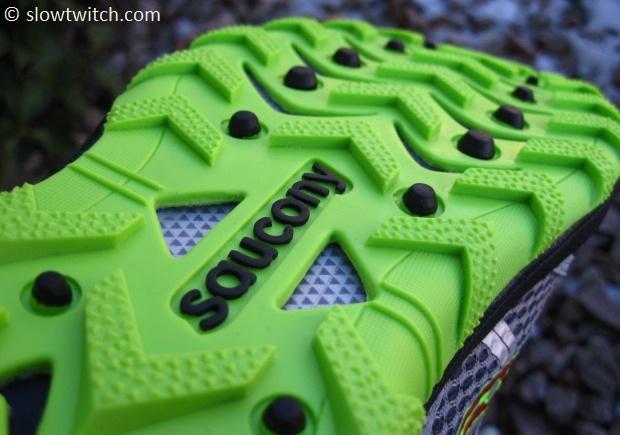
The Kinvara TR is still called ‘neutral’, as it does not have any different foam density (posting) on the medial side to combat pronation. Similar to all other current Saucony shoes, they conveniently list the heel-toe offset right inside of the shoe:

I’ve put a fair number of miles in the TR, and have found it to be a nice shoe for all intents and purposes – but also a different animal than the road-intended Kinvara. I think of the TR as a trail racing flat, but built with some modern ‘minimal’ themes – namely the wide base of the standard Kinvara. It is definitely more comfortable to wear around than my spikeless trail racing flats from five years ago.
The only downside is that it doesn’t feel quite as pillowy-soft as the road Kinvaras. The stiffer forefoot surely makes your foot an effective lever for fast running; it just doesn’t feel quite as friendly. I think that is likely a necessary evil – if you want a light weight trail shoe, something has to give. A rock plate adds weight, and so does a thick sole (so they tone down the sole thickness). I’ve seen New Balance do the same thing with their trail racers – the 790, MT100, and MT110 – all of which I’ve owned and liked. You get puncture protection, good weight, but unfortunately lose a little bit of cushion in the execution. In their defense, I really like the Kinvara TR sockliner (it feels very similar to the standard Kinvara), which gains back a few points in comfort.
Kinvara TR Specs:
-MSRP: $100
-Weight: 7.9oz (men’s size 9)
-Heel-to-toe offset (ramp): 4mm
-Forefoot height (midsole + outsole): 12.5mm
-Heel height (midsole + outsole): 16.5mm
-Category: Neutral / Trail
-Sizes: Men’s 7-13, 14
Women’s 5-12
-Standard width only



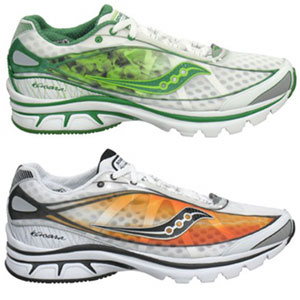
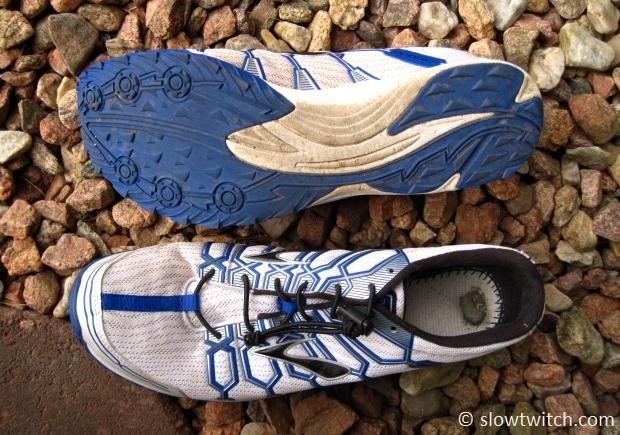
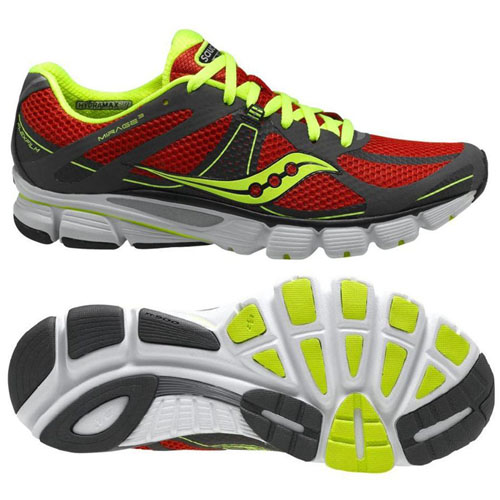
Start the discussion at slowtwitch.northend.network